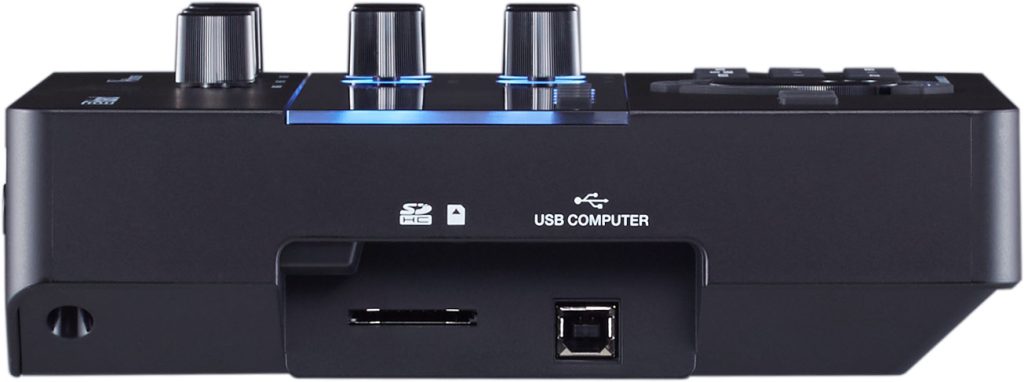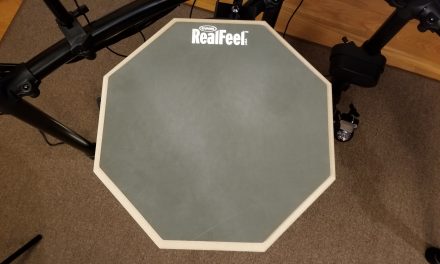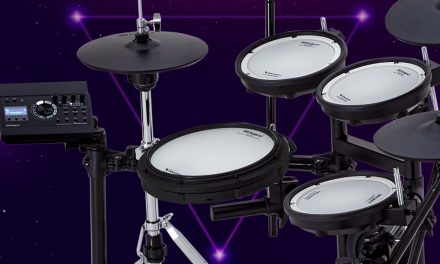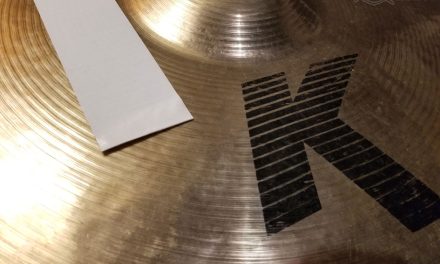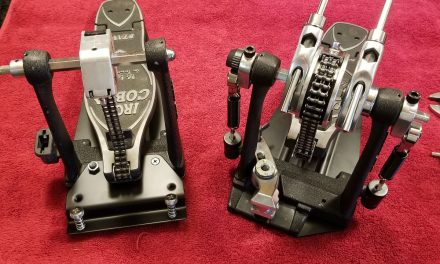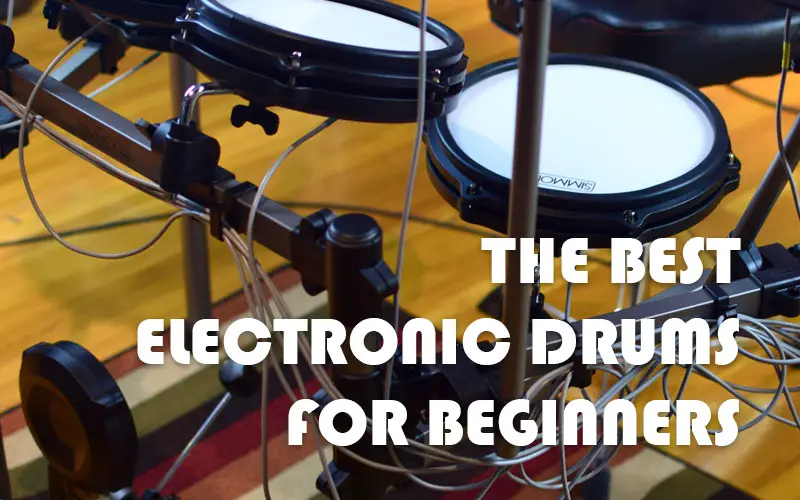There are plenty of ways to capture a recording of an electronic drum kit. It’s a lot easier to try to record an electronic drum kit than an acoustic kit, at least for most people. The process for recording tracks from your electronic drum kit can vary depending on what features are available on your drum module. Let’s run through the options and basic concepts.
Recording the Audio Output of the Drum Module
One of your first, most basic options is to simply capture the audio output of your drum module. This may or may not be ideal depending on your goals.
To capture the audio output, you need to first analyze the audio outputs on your drum module. Most modules will have at least a stereo main output where you can output a stereo audio signal with left and right audio channels. You can connect your main outputs to any recording device and play and record.
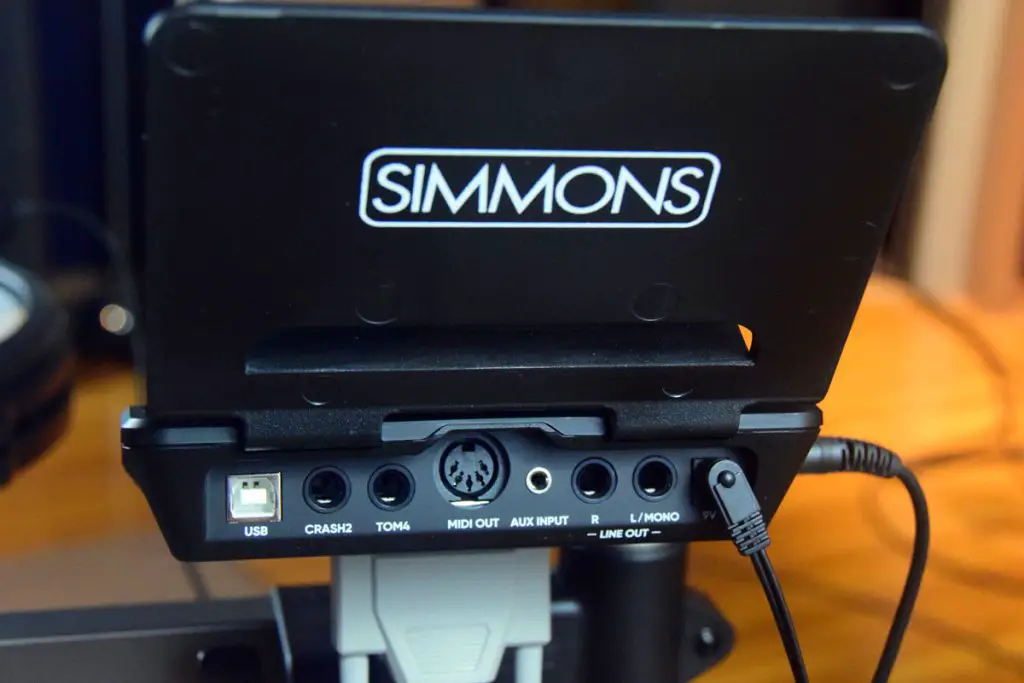
If you are recording with a computer, you will need to route the audio outputs into your computer. You can use the audio inputs that are built into your computer if they are available, but this is not always ideal depending on the quality of the built-in inputs.
You will need an audio interface to get the best results. A good example of a basic audio interface that can capture two audio channels would be the Scarlett 2i2. It’s fairly inexpensive and has a good audio quality.
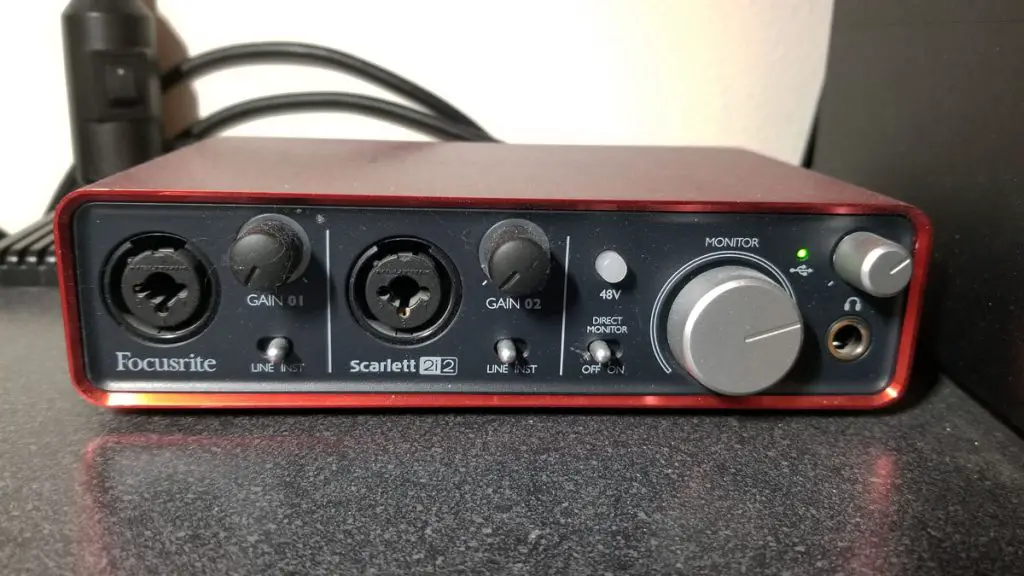
Of course, if you are using the audio outputs on your module to record, you aren’t limited to recording with a computer. You could also look at other options depending on what gear you might already have. Some other example of capturing the audio would be:
- Using a digital multi-track recorder such as a Tascam DP-006 or any other of the many similar options out there from the last couple decades
- Using a multi-track tape recorder can get interesting results if you’re into more lo-fi sounds and can find one used somewhere, but will restrict the ability to digitally edit.
- Use a sampler such as an Akai MPC to capture yourself playing drum loops that you can then use for production purposes.
There’s many other options, but this should give you some ideas to work with.
Negatives of Recording the Stereo Audio Output
Recording the stereo audio output on your drum module will create some restrictions during post production. After you record yourself playing the drum tracks, your ability to edit your recorded tracks will be limited since you won’t be able to edit each track individually.
You won’t be able to make adjustments such as level, panning and effects on just the snare or the kick on it’s own, for example. This is because they aren’t recorded to their own separate, individual tracks like if you had done multi-tracking instead.
Some Advanced Drum Modules Have Individual Audio Outputs For Each Channel
I used to have an Alesis drum kit that had individual audio outputs for each sound around the kit. There was an individual output for the snare, the kick, each tom, each cymbal and so on. This allowed me to hook the module up to a multi track recording interface and record it more like an acoustic kit in terms of capturing separate audio channels for each sound around the kit. This is what you’ll want to look for if you want to multi-track the audio outputs from your kit.
Recording Audio From USB Output
This method is what you’ll most likely want to look at to get the best results recording audio tracks from most modern drum modules. Many newer or modern drum modules allow you to output multi-channel audio to a computer which can then be captured with your DAW or audio recording software.
If your drum module supports multi-channel audio output over USB (check the manual, settings or specs) this can work really well.
How it works is you connect your drum module to your computer via the USB output and then your audio recording software will be able to recognize the separate digital audio channels for the sounds around your drum kit, allowing you to assign them to individual tracks for multi-track recording. This is awesome because you’re only using a single USB cable to multi-track audio channels.
When compared to using audio outputs and audio inputs, this keeps things much more simple than connecting up to 8 or more audio cables between audio outputs and an audio interface.
Once you have captured and recorded the audio channels this way, you’ll have clean, digitally recorded audio tracks that can then be mixed and processed as you see fit. Pretty awesome stuff from the world of modern music production.
Recording MIDI Output From Your Electronic Drum Kit
Another option that is very commonly used by electronic drummers is to record the MIDI output from the drum module. This works differently than capturing the actual audio output, instead you are recording MIDI note information from your drum kit.
Without getting too deep into MIDI itself here – with MIDI, you aren’t capturing the audio itself, but instead your are capturing the information about the notes played and then using that information to play back completely different sounds on your computer or other devices.
This can be advantageous if you don’t want to use the sounds that are built into your drum module. This method can also give you more flexibility for post processing and fixing sloppy playing since it’s easier to move a MIDI note on a grid than editing recorded audio tracks.
Drummers who record with MIDI are essentially using their drum kits as a controller for a software drum module on their computer. Examples of this would be software such as EZ Drummer.
EZ drummer makes it surprisingly easy to connect and configure an electronic drum kit when you want to control drum software via MIDI. It’s one of the better options to look at if you are trying out drum software for the first time and are new to the process of connecting a drum kit to a computer as a controller.
What’s My Preferred Method?
Myself, I prefer to use the MIDI option when recording drums. I usually prefer the sounds of drum software over what’s in my drum modules, at least when recording. I also like the ability to change the sound of the kit after I’ve recorded the drum tracks. When recording audio tracks, you don’t get that flexibility to completely swap out the sounds after recording.
It’s just my personal preference though and there’s no wrong way to do it. I’ve recorded drums directly from modules as well, and I still like to record acoustic drums when I have the opportunity. So it just comes down to what fits your situation and personal preference.



